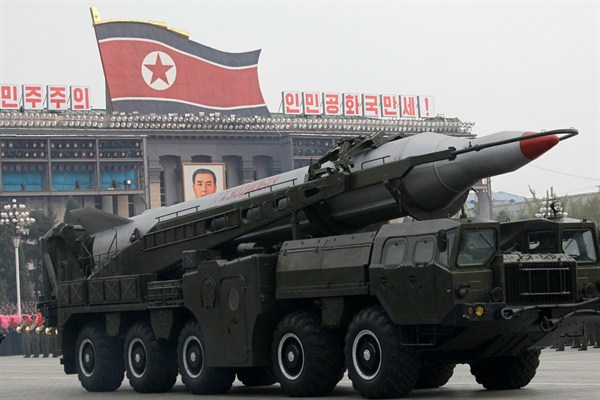Last week, The New York Times reported that the United States had secretly stepped up cyber attacks against North Korea’s missile program during President Barack Obama’s second term. The attacks were initially a success, according to the Times. “Soon a large number of the North’s military rockets began to explode, veer off course, disintegrate in midair and plunge into the sea.”
Whether or not a series of test failures in recent years were the direct result of U.S. cyber interference, as the Times suggested, North Korea’s nuclear weapons program is a prominent target for U.S. cyber warfare—and President Donald Trump is now at the helm of that campaign. Tensions are rife on the Korean Peninsula and throughout Northeast Asia, as suspicions mount that another North Korean nuclear test may be on the horizon and Kim Jong-un’s regime continues to work unabated on a long-range missile with the capability to reach the continental United States. In this climate, is cyberwar the best strategy?
The situation may be as serious as any time since North Korea left the Nuclear Nonproliferation Treaty in 2003 and conducted its first nuclear test in 2006. For the past decade, the race has been on to manage the emerging security threat through a mixture of diplomacy—principally through the so-called six-party talks, with China, Japan, North Korea, Russia, South Korea and the U.S.—and ramping up military assets in the region, particularly the deployment of ballistic missile defenses. But the apparent move toward using cyber weapons against the North marks an important shift in policy—one that may change the security situation considerably, though not perhaps in the best interests of the U.S. or its regional allies in the long run.

